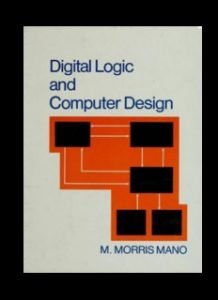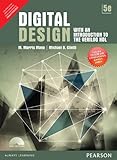Digital Logic And Computer Design
Digital Logic And Computer Design Since the fourth edition of Digital Design, the commercial availability of devices using digital technology to receive, manipulate, and transmit information seems to have exploded. Cell phones and handheld devices of various kinds offer new, competing features almost daily.

Digital Logic And Computer Design By M. Morris Mano
Underneath the attractive graphical user interface of all of these devices sits a digital system that processes data in a binary format. The theoretical foundations of these systems have not changed much; indeed, one could argue that the stability of the core theory, coupled with modern design tools, has promoted the widespread response of manufacturers to the opportunities of the marketplace.
Consequently, the refinement of our text has been guided by the need to equip our graduates with a solid understanding of digital machines and to introduce them to the methodology of modern design. This edition of Digital Design builds on the previous four editions and the feedback of the team of reviewers who helped set a direction for our presentation.
The focus of the text has been sharpened to more closely reflect the content of a foundation course in digital design and the mainstream technology of today’s digital systems: CMOS circuits. The intended audience is broad, embracing students of computer science, computer engineering, and electrical engineering.
 |
|
Digital Design supports a multimodal approach to learning. The so‐called VARK characterization of learning modalities identifies four major modes by which humans learn: (V) visual, (A) aural, (R) reading, and (K) kinesthetic. In hindsight, we note that the relatively high level of illustrations and graphical content of our text addresses the visual (V) component of VARK; discussions and numerous examples address the reading (R) component.
Students who exploit the availability of free simulators to work on assignments are led through a kinesthetic (K) learning experience, including the positive feedback and delight of designing a logic system that works.
The remaining element of VARK, the aural/auditory (A) experience, is left to the instructor. We have provided an abundance of material and examples to support classroom lectures. Thus, a course in digital design, using Digital Design, can provide a rich, balanced learning experience and address all the modes identified by VARK.

Disclaimer:- Dev Library is not the owner of the books and neither does it create books. We just provide the links to the book for the rural and poor students who can’t afford to buy books. Those E-Books and PDFs are already available on the internet. For any reason, if someone thinks that I’m violating any laws or if anyone has any issues regarding this, please feel free to Contact Us.

Hi, I’m Dev Kirtonia, Founder & CEO of Dev Library. A website that provides all SCERT, NCERT 3 to 12, and BA, B.com, B.Sc, and Computer Science with Post Graduate Notes & Suggestions, Novel, eBooks, Biography, Quotes, Study Materials, and more.








